Wall painting in the interior
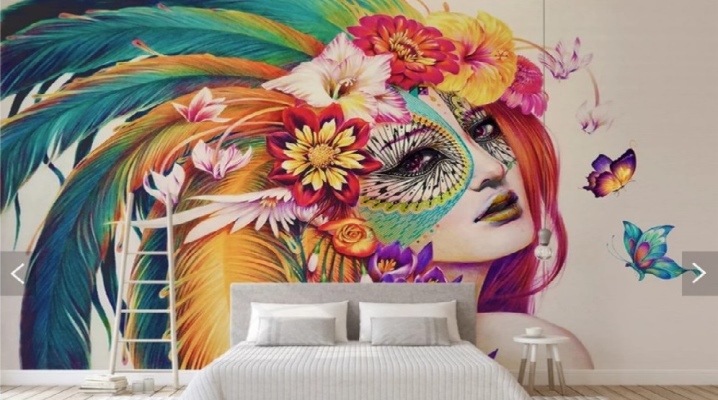
Wall painting in the interior - one of the most popular trends in modern design of premises, residential and public, the popularity of which is understandable. Modern trends towards minimalism, spaciousness, bright color schemes involve the widespread use of picturesque panels placed on the walls, floor and even the ceiling.
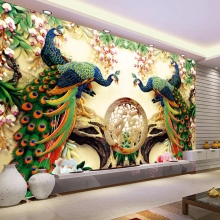

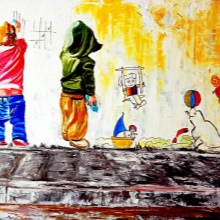
Peculiarities
Wall painting ranges in a wide variety of art styles - from primitive animated graffiti to real works of art. Any wall painting organically fits into the general space with furniture, textiles, decorative details, if it is not cluttered and cluttered with unnecessary elements and household items.
The pleasing features of this technique for beautifying apartments, rooms in a private house, chamber offices and huge halls in public buildings are numerous and do not need much advertising.
Many designers believe that painting on walls is an organic part of human nature, a kind of gene memory, which traces its history from rock paintings, the times when a cave served as a home for people.
The modern demand for painting in the interior is easily explained if we remember how many means for creating works of art are in the arsenal of a modern person.
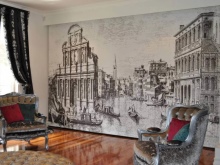
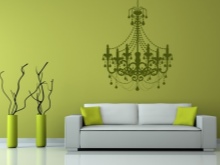
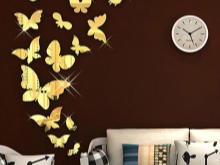
The thirst for creativity and the desire for beauty are two impulses that induce a person to create a creative, original or distinctive design of a living space, and interior painting is a great way, with many significant advantages:
- you can create a decorative panel using the services of an artist or designer;
- you can satisfy your desire to create beauty even with minimal abilities;
- for variable interior styles, you can use different techniques, organically interwoven or, conversely, contrastingly contradicting;
- this is a great way to bring individuality and originality even into the setting of a small apartment, not to mention the spacious living rooms of a country house, guest bedrooms, and recreation areas;
- there are no restrictions on the choice of location (if free space allows, then it is better to choose areas out of the reach of direct sunlight, but not in a dark corner);
- the applied techniques make it possible to make the image flat or convex, bright or black and white, expanding the space or visually reducing the blank blind spot in the interior.

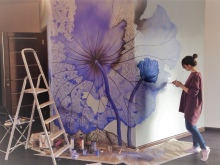
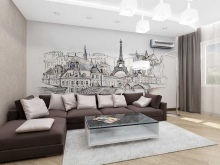
There are some nuances that dictate the choice of techniques different in performance and artistic means. In the interior, a lot depends on style preferences, the material of the walls (although in modern conditions a separate coating can be made for painting), the degree of illumination of the room and its configuration.
All this requires strict thoughtfulness, planning of the furnishings to be placed, and the main purpose of the premises.
In the last condition there is a fine line of the appropriateness of the conceived image, unless, of course, the main goal is not shocking, deliberate kitsch or eclecticism that is fashionable now.
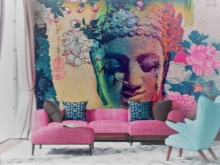
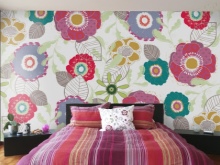
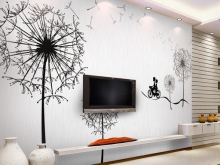
Technique
After the priorities are set and the goals of progressive decor are outlined, you should think about the choice of technology and tools necessary to implement the idea. Wall painting usually dictates acceptable options to the authors - a lot depends on the abilities and skills of the mother who will embody the idea.
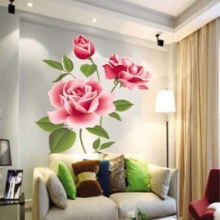
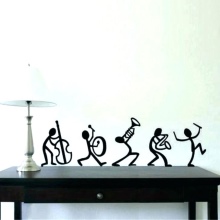
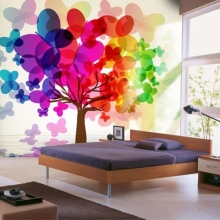
Painted walls can require a perfect surface and costly materials, as well as a long time to translate the original idea:
- art painting is one of the most beautiful, but also one of the most time-consuming, it requires drawing ability, special paints, a brush and a palette for mixing;
- the simplest way to create a picture on the walls is stencils, and with the skillful manufacture of an expressive means, stencil painting will become the easiest and most affordable way for an amateur;
- now they practice various types - from painting with a marker, pencil or ink, to embossed technique, in which an initially convex pattern is created from plaster, and then painted;
- the most popular painting is hand-painted, but it can also be different - from geometric patterns and abstract spots, to such heights as the dot, invented by the impressionists, or patina, with skillful aging of the image.


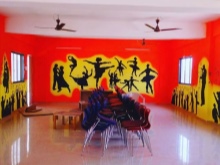
Even the simplest indoor wall painting technique can be a spectacular visualization tool when complemented by decorative details. Amateur amateurs paint the walls with primitive children's drawings, floral ornaments, geometric shapes, letters or numbers.
Craftsmen can use anything - watercolor, gouache, wax crayons, spray paint for graffiti, and it will still be effective if the features of the room and its configuration are taken into account when planning.
In some cases, a fresco or panel can be a means of zoning, adding additional decorativeness or creating a stylistic entourage.


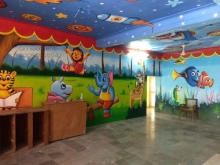
Grisaille
The technique is not an easy way to embellish your home, but when done skilfully, it creates an exceptionally sophisticated and sophisticated look. The method is subject only to specialists with pronounced artistic abilities, an accurate eye, the concept of chiaroscuro, most often instilled in the course of teaching painting. However, the desire to get a skillful imitation of stucco in wall painting often prevails over considerations of limited budget and cost savings.
Grisaille can visualize the indispensable elements of classicism or Empire style in the interior, place semi-columns in the corners, and imitation of stucco molding under the ceiling. There are also more modern options, but the subject of preference is usually porticoes, columns, arches and sculptures on pedestals, leaving such a realistic impression that a fake can only be detected by getting close.
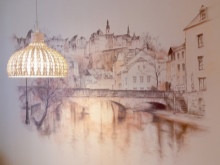
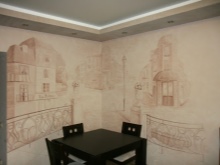

Acrylic
It is often listed in the list of techniques that you can do yourself. Painting with acrylics is rarely difficult for a home artist. Of course, if in his plans he does not have a colossal painting panel, which will require painting with acrylic paints using the watercolor technique and adding variable additional components.
At home, you can independently paint the wall with acrylic in a primitive, symbolic, abstract scale, geometric patterns or floral motifs. The undoubted advantages of this decorative material are the complete absence of odor, relative environmental friendliness, quick drying and unparalleled brightness.
In addition, a drawing with acrylic paints will last on the wall for a guaranteed long time, even if the room is constantly filled with sunlight.
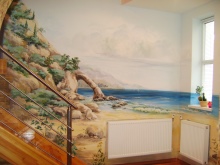
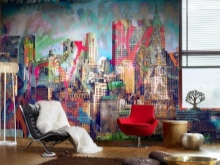
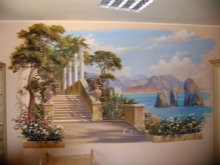
Fluorescent
An eminently effective and decorative medium used in reception areas, parties, but hardly suitable for a bedroom or nursery. The main advantage is in the different visual effect of painting in the daytime and at night. Relatively simple in daylight, the fluorescent pattern can be amazing if professionally placed lighting is provided for night and daytime.
It doesn't matter whether this popular paint is used in a small living room of a small apartment or in a spacious hall of a country mansion. The impression of guests or hosts is enhanced if themed plots are used - the seashore, starry sky with comets, urban landscapes. Luminescent paints are more often used in the interior of entertainment venues.
The use of fluorescent technology in the home interior will only be beneficial if UV lamps are available.
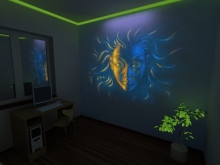
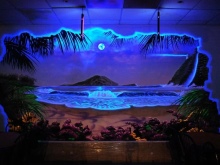
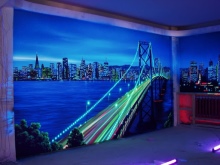
Graffiti
A common misconception is that this urban technique is only good for fences, exterior walls, and an abandoned industrial area. Actually it has long been a widely used technique in the design of living rooms. Previously, protest painting, closely associated with informals, and now wall graphics, created by professionals with a spray can in their hands, can give unique effects - from reducing or increasing space using color variations, to volumetric paintings that leave a beautiful realistic image.
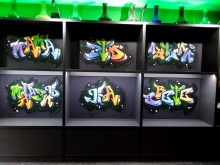
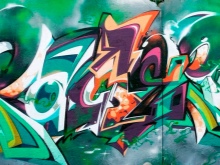
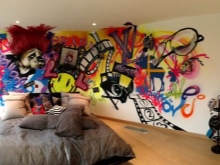
Abstraction
Always a popular way to decorate walls, moreover, subservient even to a person who first picked up tools - spray cans or acrylic paints, a brush, roller, marker or even a spray bottle. This season, the geometric theme prevails, designers recommend recalling the school science of squares, triangles, parallelepipeds and circles to decorate walls and even fashionable details - ottomans, pillows.
Geometry, in the opinion of modern designers, is an inexhaustible source of inspiration, and also a simple and affordable way to model your unique abstraction.
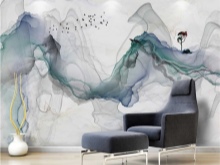
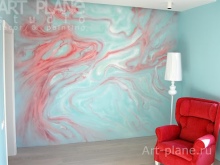
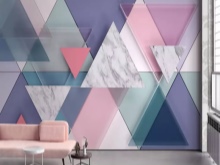
Airbrushing
Possession of a special tool - an airbrush, requires a confident hand, an accurate eye and knowledge of professional subtleties. Recently, however, airbrushing is increasingly used in interior design because of its picturesqueness and unique visualization. If the funds allocated for the renovation allow you to invite a real master, it will be difficult to find anything more modern, fashionable and impressive than a professional airbrushed drawing.
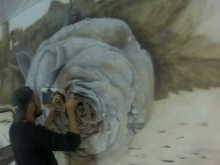

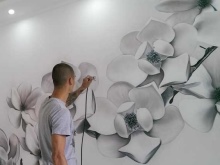
Fresco
The general collective name for a technique for a complex image, any area covered by the volume and quite difficult to implement. To create a fresco, you need plastic plaster applied to a metal mesh, masterful use of a brush and special materials.
But the image resembles an old one and leaves a lasting impression.
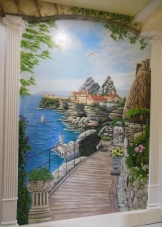
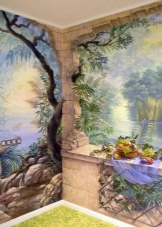
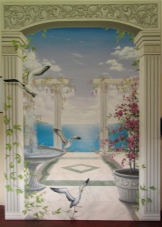
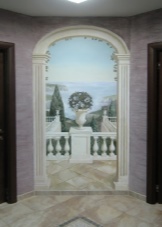
Volumetric
A more common name is "relief technique". Intimidating claims about the difficulty of creating a wall relief are easily overcome, especially if a simple picture is conceived, with elements of abstraction or floral notes. There is a ready-made stucco molding made of polymer materials on the construction market. Working with plaster is also not a difficult one, if you learn to make molds for casting from scrap materials.
After creating a three-dimensional drawing in white tones, you can paint it with acrylics, an airbrush, a brush, or spray paint from a spray bottle.
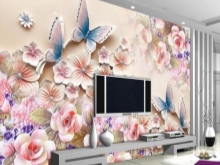
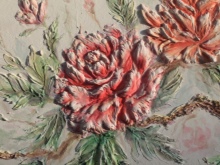
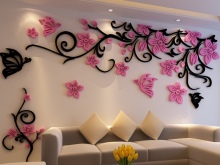
Watercolor
Fresco is a type of watercolor wall painting, just like airbrushing, but craftsmen can use alsecco (cheaper and more durable painting on dry plaster).
Renovation publications refer to the watercolor technique as grisaille and graffiti - it all depends on how thin a layer of the color used creates blurred outlines of imitation of a drawing with water-soluble paints.
The lightness and airiness of the image gave an indirect name to the applied mural painting technique.Some types of wall paintings or panels are simple in execution, they can be done independently, but the main effect is achieved only if the wall painting matches the general style.
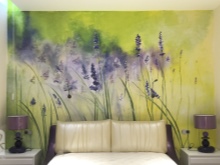

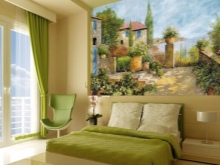
Styles
Ideas for creative design can belong both to the owner or mistress of the home, and to an advanced designer who takes colossal funds for their consultations. But in any case, the most commendable epithet will be not so much "modern apartment" (loyalty extends to the use of any decor option), as the "stylish" review. This does not mean that in the design of rooms it is imperative to adhere to a single line. The living room can be dominated by classics, empire style, eco-style in a wooden entourage, and in the bathroom - ultramodern or antique-style painting.
But the Egyptian sphinxes will be out of place in the design of the veranda if it overlooks the Japanese garden, as well as the Empire furniture in the hallway, where one of the walls is covered with symbolic brickwork.
The most popular styles in which wall painting can be applied are the following.
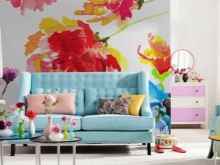
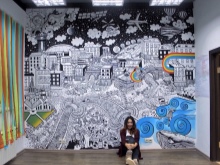

Loft
A preference for those who love large or skillfully created spaces, a minimum of furniture and a maximum of air... It is in demand in modern interior art because of the wide possibilities for self-realization.
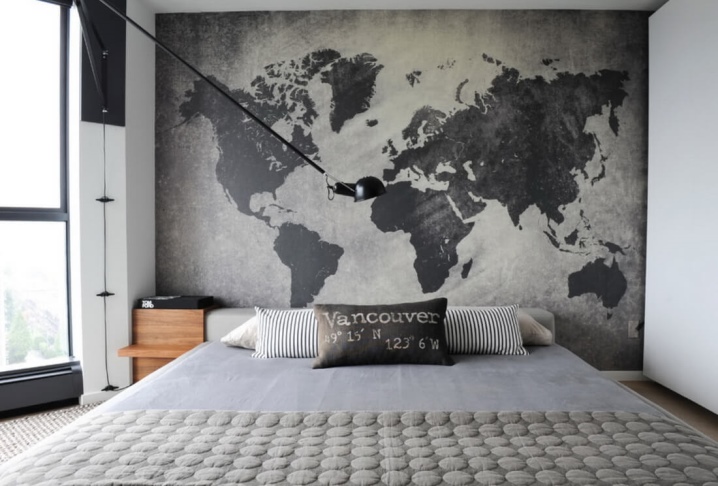
Japanese style
It requires not only a careful selection of details, furniture, images, but also knowledge of some subtleties.
Otherwise, it is easy to slip into banality or confuse the attributes of Japan with Chinese.
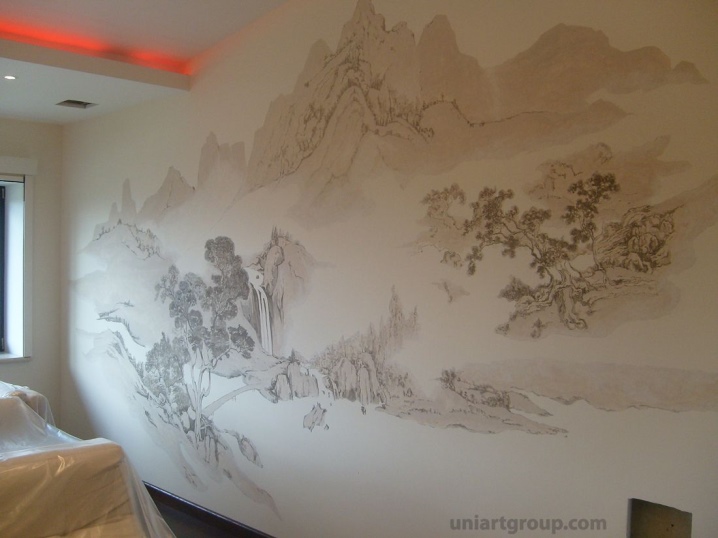
Provence
A popular style for lovers of curved legs, floral textiles, pastoral pictures and light colors. Kitchens and bedrooms are often decorated in the Provence style, but it also looks quite organic in the living room.
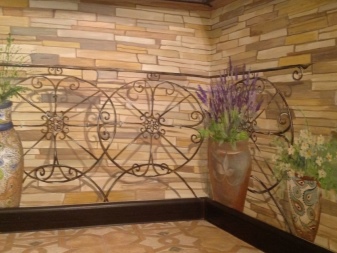
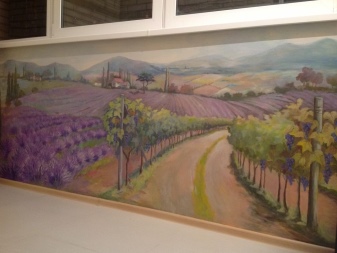
Oriental style
The predominance of draperies, glitter, splendor, ornaments, aggressive colors. Usually they pay a lot of attention to details, careful selection of paraphernalia.
However, to create the appropriate impression, you can fully use a certain admixture of eclecticism.
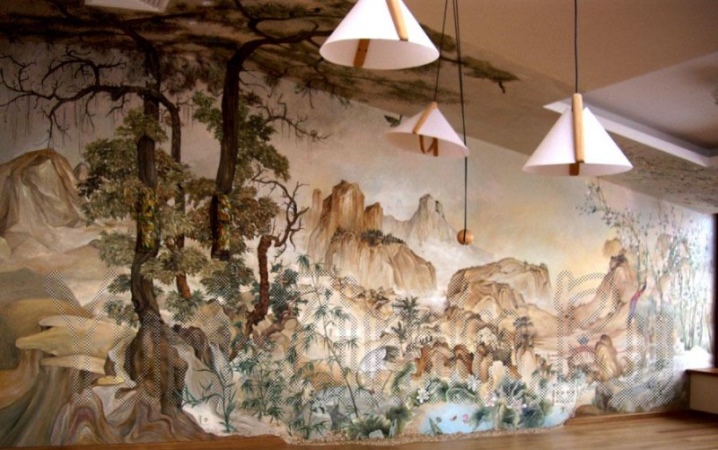
Modern
Fuzzy lines, low-contrast, blurry combinations, combination of utility and romanticism without sharp corners leave little room for use in modern rooms.


Art Deco
Give a chance widely use works of art in decoration, but it requires moderation and good taste.
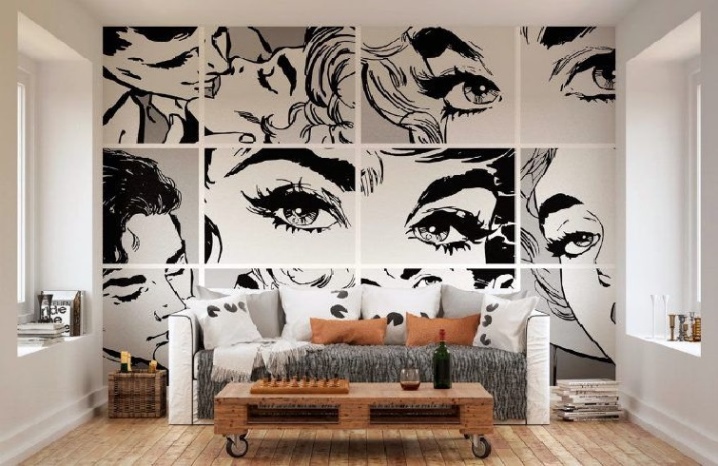
Design
The popularity of the use of wall painting in modern interiors does not mean that the choice of plot and technique of execution can be dictated by the lack of skills of the home craftsman or his strong preferences. Each of the common options has a specific purpose.
Black and white graphics will easily fit into the loft, but will be out of place in the Empire style. The image of a black mountain with a white cap of snow, a stylized Japanese landscape looks great in a Japanese style. A creative picture of the night with a lantern, an impressive mural would be suitable for the living room, and a map of the world for the nursery.
There are standard stereotypes that you can easily get away from by depicting a shimmering space or an alluring sea on your bedroom wall to wake up in a good mood. But tropical leaves should not be in Provence, Empire, or traditional classical style, as well as wood in ultramodern, which is characterized by metal and stone.
You cannot paint a picture on the wall simply because it is beautiful. It should organically fit into the conceived and implemented idea.
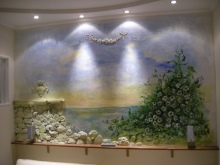
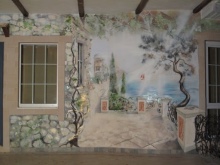
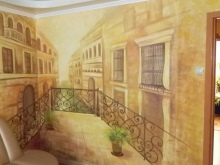
Beautiful examples
Fashion magazines, sometimes under the heading of beautiful examples, give interiors that leave the user bewildered. For those who have not yet decided on the choice, below are real works of art, looking at which you can simply envy those who spend time in this room.
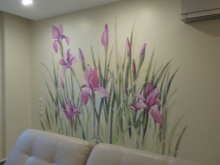

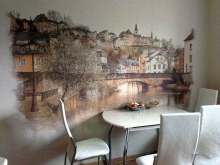
For tips on painting walls, see the following video.












The comment was sent successfully.